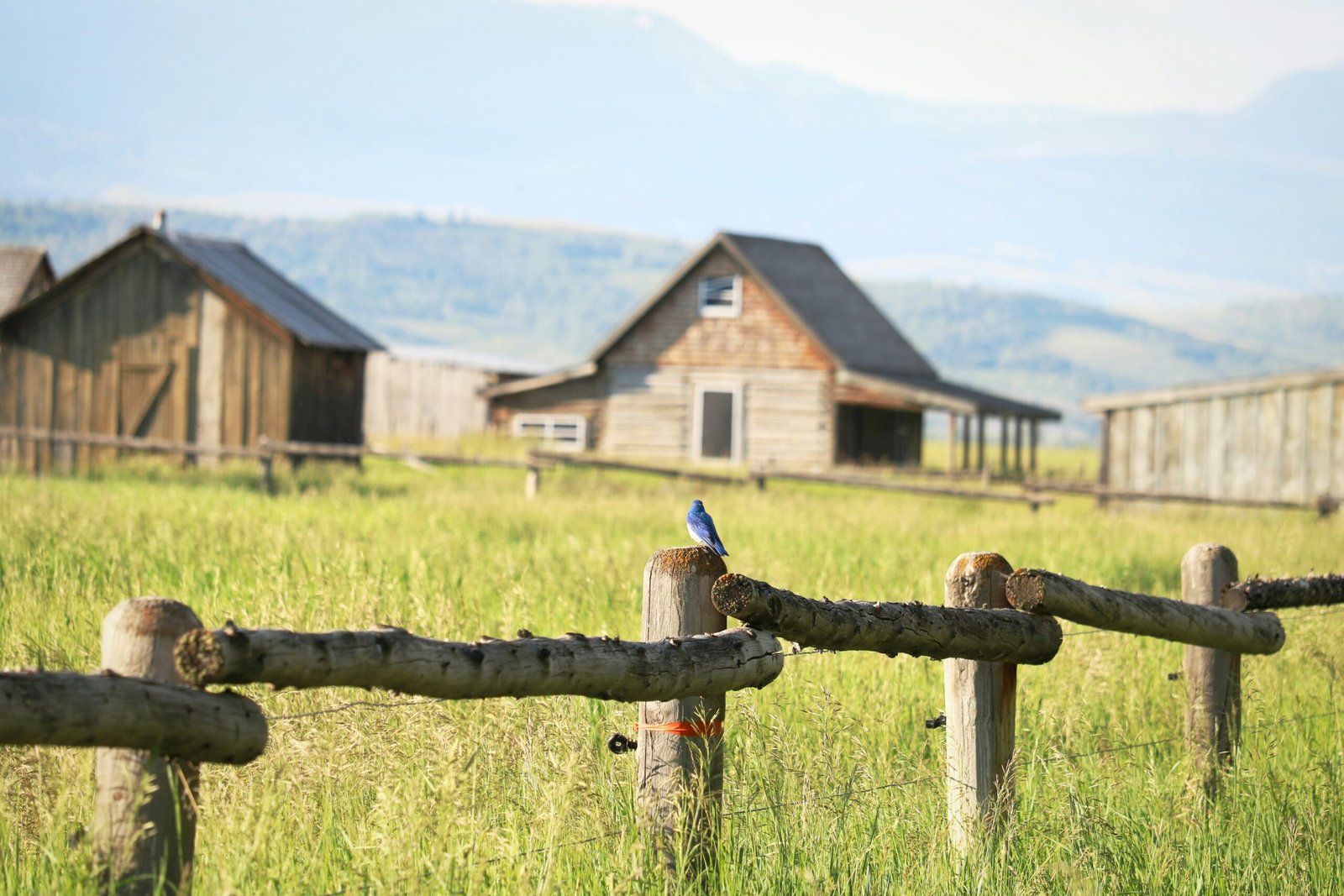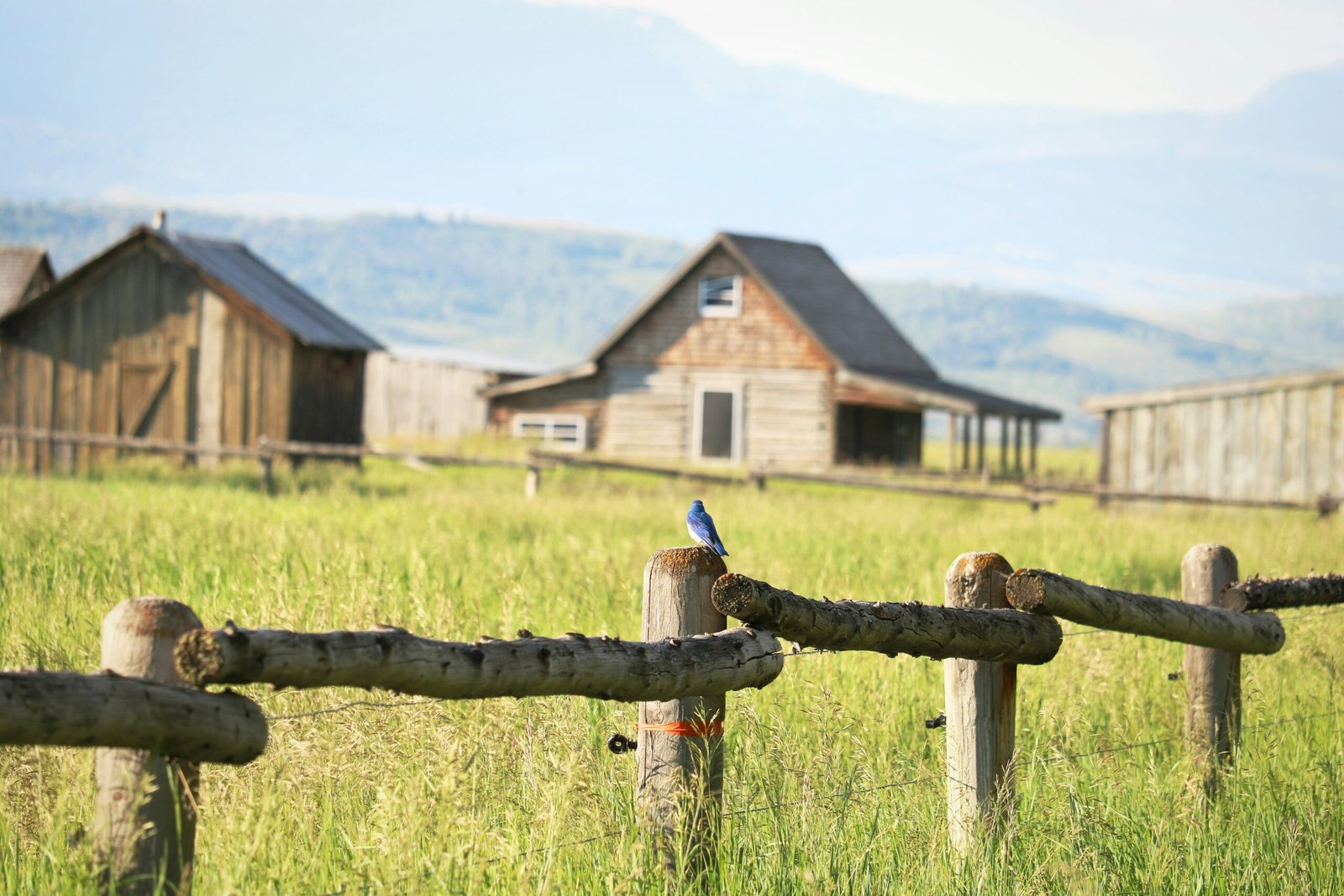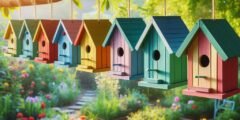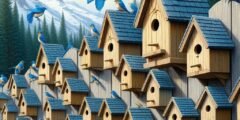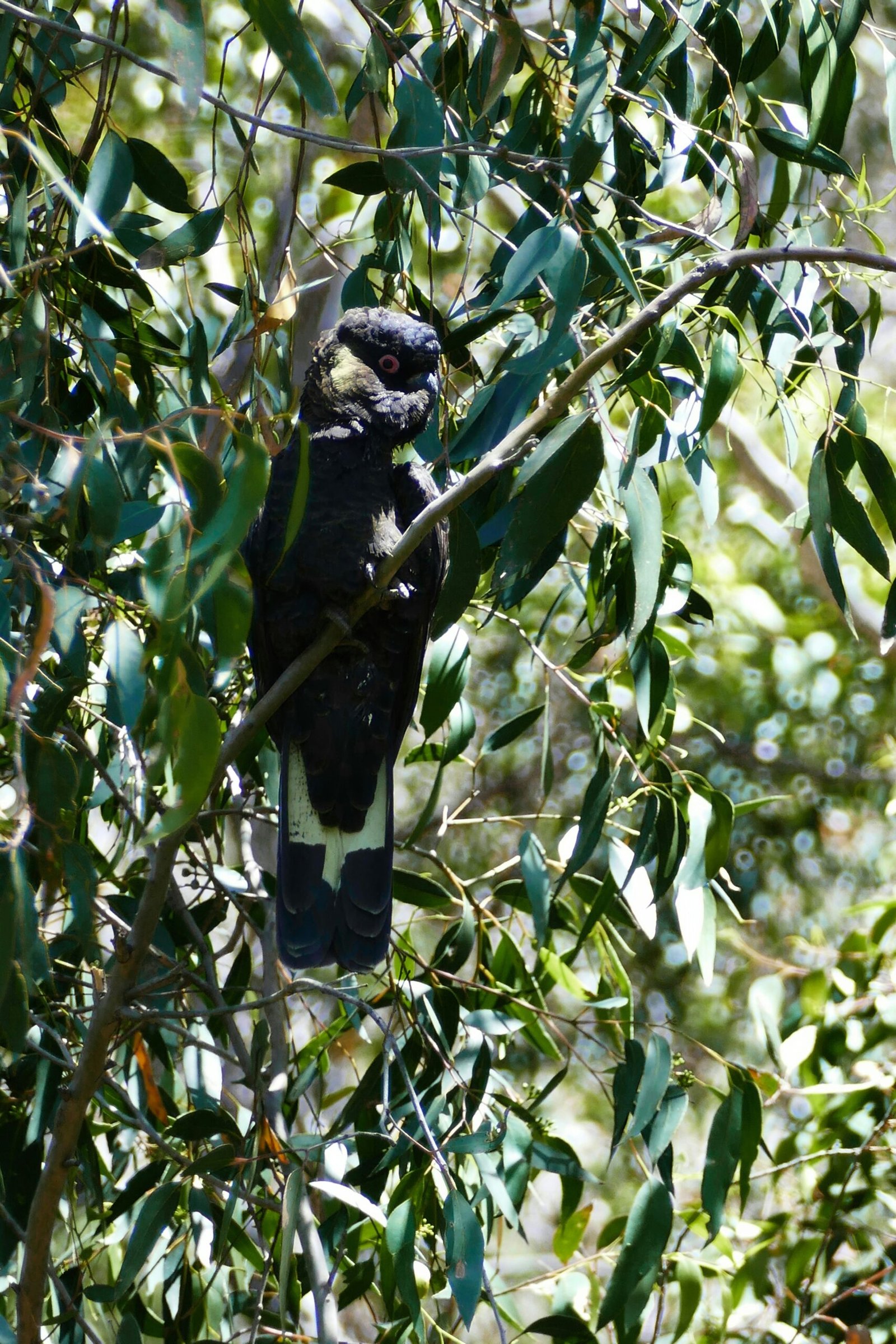Why Cedar is the Best Material for Bluebird Houses
Cedar, especially Eastern Red Cedar, stands out as the premier choice for constructing bluebird houses. This particular type of wood possesses several intrinsic qualities that make it exceptionally well-suited for providing a robust and secure habitat for bluebirds. One of the most significant attributes of cedar is its natural resistance to rot. Unlike other wood varieties that may quickly deteriorate when exposed to the elements, cedar remains durable and intact over extended periods, ensuring longevity for bluebird houses.
Another crucial benefit of using cedar is its resistance to insect damage. Bluebird houses made from cedar are far less likely to be compromised by pests, which can otherwise pose a threat to the safety and wellbeing of the birds. This inherent insect-repellent quality of cedar eliminates the need for chemical treatments, thus maintaining a safe and non-toxic environment for bluebirds.
Furthermore, cedar’s natural moisture resistance is vital in maintaining a dry and comfortable interior for bluebird houses. Moisture can lead to mold and mildew growth, which can be harmful to bluebirds. Cedar’s ability to repel water helps to keep the interior of the birdhouse dry, creating an optimal living space for these birds.
In addition to its practical benefits, cedar also offers aesthetic advantages. The wood’s pleasing appearance and aromatic scent can enhance the visual appeal of any garden or outdoor space. Its warm, rustic look blends seamlessly with natural surroundings, providing a visually pleasing habitat for bluebirds.
Overall, the unique properties of cedar, including its resistance to rot, insects, and moisture, combined with its aesthetic appeal, make it the best material for building durable and safe bluebird houses. When considering what kind of material is best suited for building a bluebird house, cedar undoubtedly emerges as the top choice.
Alternative Materials for Bluebird Houses
While cedar often stands out as the preferred material for constructing bluebird houses due to its natural rot-resistant properties, several alternative materials can also be effectively utilized. Exploring these options can offer flexibility and might even better suit specific environmental conditions or budgetary constraints.
Redwood is one such alternative that shares many advantages with cedar. It is naturally resistant to decay and insect infestation, making it a durable choice for outdoor structures like bluebird houses. Redwood’s inherent stability minimizes warping and splitting over time, which helps maintain a safe and comfortable habitat for the birds. However, redwood can be more expensive than other options and may not be as readily available in certain regions.
Pine is another viable option, particularly when sealed with a water-based stain or paint. Although pine is not naturally rot-resistant, proper treatment can enhance its durability and resistance to weather elements. Sealing pine can also prevent it from absorbing moisture, which helps in maintaining the structural integrity of the bluebird house. However, it is crucial to avoid oil-based treatments as they can release harmful fumes. One drawback of using pine is its tendency to warp and crack if not properly maintained.
Hardwoods such as oak or maple can also be considered for building bluebird houses. These materials are exceptionally strong and durable, capable of withstanding harsh weather conditions. The density of hardwoods provides excellent insulation, keeping the interior of the birdhouse at a stable temperature. However, the weight and difficulty of working with hardwoods can be a disadvantage, and they often require more effort to source and prepare.
Exterior-grade plywood offers another alternative, especially for those looking for a cost-effective and easily accessible material. Plywood is engineered to resist moisture and is less prone to warping compared to other woods. It is crucial to select plywood that is free from harmful chemicals, as these can be detrimental to the birds. One potential drawback is that plywood may not have the same aesthetic appeal as natural wood, but it can be painted or stained to improve its appearance.
Each of these materials presents its own set of benefits and challenges. When choosing the best material for building a bluebird house, considerations such as local climate, availability, budget, and personal preference will play significant roles in the decision-making process.
Materials to Avoid for Bluebird Houses
When considering what kind of material is best suited for building a bluebird house, it is equally important to understand which materials to avoid. Certain materials can create an inhospitable environment for bluebirds, impacting their health and safety. Among these materials, pressure-treated wood, cedar shakes, clay, and ceramic stand out as particularly unsuitable options.
Pressure-treated wood, while durable and resistant to rot, is impregnated with chemicals that can be harmful to birds. These chemicals, such as arsenic and copper, can leach out over time, posing a toxic threat to bluebirds and their chicks. The risk of exposure to these harmful substances makes pressure-treated wood a poor choice for constructing birdhouses.
Cedar shakes, although naturally resistant to decay, present another set of challenges. The rough texture and uneven surface can harbor pests and parasites, which can be detrimental to the health of the bluebirds. Additionally, the aromatic oils found in cedar may be irritating to some bird species, potentially causing respiratory issues.
Clay and ceramic are also materials to avoid when building bluebird houses. These materials retain moisture, leading to damp and cold conditions inside the birdhouse. Such an environment can be detrimental to the wellbeing of bluebird chicks, increasing the risk of hypothermia and respiratory problems. Furthermore, clay and ceramic birdhouses tend to accumulate heat during sunny days, creating excessively warm conditions that can be equally harmful.
In summary, selecting the right material for a bluebird house is crucial for ensuring a safe and healthy habitat. Avoiding materials such as pressure-treated wood, cedar shakes, clay, and ceramic can help prevent toxic exposure, pest infestation, and extreme temperature fluctuations, thus fostering a conducive environment for bluebirds to thrive.
Ideal Wood Thickness for Bluebird Houses
The thickness of the wood used in constructing bluebird houses is a fundamental aspect that directly impacts both the insulation and the structural integrity of the house. Through careful consideration and extensive research, experts have determined that a wood thickness ranging between ¾ and 1 inch is optimal for bluebird houses. This specific range offers a harmonious balance, ensuring that the house is neither too flimsy nor excessively heavy.
A wood thickness within this range provides superior insulation, which is essential for maintaining a stable internal temperature during varying weather conditions. Bluebirds, like many other small avian species, are sensitive to temperature fluctuations. Insufficient insulation can lead to extreme temperatures inside the house, potentially jeopardizing the health and safety of the inhabitants. Using wood that is too thin will fail to offer adequate thermal protection, while wood that is too thick can make the house unnecessarily heavy and challenging to mount securely.
Moreover, the structural integrity of the bluebird house is significantly enhanced with a wood thickness between ¾ and 1 inch. This thickness ensures the house is sturdy enough to withstand external forces such as wind and predator attempts without compromising its stability. Additionally, it simplifies the construction process, as this thickness provides a manageable balance, making it easier to cut, assemble, and secure the house components.
When selecting material for building a bluebird house, considering the wood thickness is as crucial as choosing the type of wood itself. Opting for a thickness within the recommended range ensures the house will offer the best environmental conditions for bluebirds, promoting their health and increasing the likelihood of successful nesting. Therefore, for anyone looking to build an effective and durable bluebird house, adhering to the ¾ to 1 inch wood thickness guideline is highly advisable.
Impact of Material Choice on Longevity
One of the most critical factors influencing the longevity of a bluebird house is the type of material used in its construction. Selecting the right material can ensure that the birdhouse remains a safe and durable habitat for bluebirds over the years. Among the various options, cedar and redwood stand out due to their exceptional natural properties that contribute to durability and resilience.
Cedar and redwood are highly prized for their inherent resistance to rot and insect infestations. These woods contain natural oils and compounds that act as preservatives, preventing decay and deterring pests. As a result, bluebird houses built from cedar or redwood can withstand the elements and environmental stressors much better than those made from untreated pine or softer woods. This resistance to moisture and pests significantly extends the lifespan of the birdhouse, making them an excellent investment for bird enthusiasts.
On the other hand, untreated pine, although commonly used, lacks the same level of durability. Pine is more susceptible to rot and insect damage, which can drastically reduce the lifespan of a bluebird house. Over time, exposure to rain and varying temperatures can cause pine to warp, crack, and deteriorate, ultimately compromising the structure and safety of the birdhouse.
To mitigate these issues, applying a sealant to pine or other softer woods can be beneficial. Sealants create a protective barrier that helps to repel water and resist fungal growth, thereby extending the wood’s life. However, even with sealant, the longevity of a bluebird house made from softer woods will likely not match that of one constructed from cedar or redwood. Regular maintenance and reapplication of sealant are also necessary to maintain the protective qualities.
In summary, choosing cedar or redwood as the primary material for building a bluebird house is highly advisable due to their superior longevity and minimal maintenance requirements. While softer woods like pine can be used with the aid of sealants, they generally offer a shorter lifespan and require more upkeep. The selection of material thus plays a pivotal role in ensuring that bluebird houses remain durable and functional for many years.
Considering the Weight of the Material
When it comes to selecting the material for building a bluebird house, the weight of the material plays a crucial role in both the ease of mounting and the overall stability of the structure. Lightweight materials such as cedar and redwood are particularly advantageous for these purposes. These woods are not only durable but also significantly lighter compared to other types of lumber, making them ideal choices for bluebird house construction.
One of the primary benefits of using lightweight materials like cedar and redwood is the ease of installation. A lighter bluebird house can be mounted more effortlessly, reducing the risk of accidents during the installation process. This is particularly important for those who may need to place the birdhouse at a considerable height to protect it from predators or to adhere to the recommended placement guidelines for bluebird houses.
Furthermore, the stability of the bluebird house is enhanced when lighter materials are used. Heavier materials can exert more pressure on the mounting post or tree, potentially causing it to tilt or become unstable over time. In contrast, cedar and redwood, due to their lighter weight, exert less pressure, ensuring that the bluebird house remains securely in place for an extended period.
Additionally, the natural properties of cedar and redwood contribute to their suitability. Both types of wood are resistant to rot and insect damage, which means that a bluebird house built from these materials will require less maintenance and offer a longer lifespan. This combination of lightweight and durability makes cedar and redwood excellent choices for anyone looking to create a stable and long-lasting bluebird house.
Buying Pre-Built Bluebird Houses: What to Look For
When opting to purchase a pre-built bluebird house, the choice of material is crucial for ensuring the safety and longevity of the habitat. One of the most recommended materials for bluebird houses is cedar. Known for its natural resistance to decay and insect damage, cedar provides a durable and weather-resistant option that can withstand various climatic conditions. Redwood is another excellent choice, offering similar benefits as cedar, including durability and resistance to moisture and pests.
It’s important to avoid bluebird houses constructed from treated wood. Treated wood often contains chemicals that can be harmful to birds, potentially poisoning them or causing long-term health issues. Therefore, selecting houses made from untreated, natural wood is imperative for the well-being of the bluebirds.
Materials such as clay or metal, often used for aesthetic appeal, should also be avoided. Clay houses, while visually appealing, do not provide adequate insulation against temperature fluctuations, potentially exposing the birds to extreme heat or cold. Metal houses can become extremely hot in direct sunlight, posing a risk of overheating for the inhabitants. Wooden houses, on the other hand, offer better insulation and a more natural environment for bluebirds.
Additionally, when evaluating pre-built bluebird houses, consider the thickness of the wood. Thicker wood provides better insulation, helping to maintain a stable internal temperature and offering extra protection against predators. Ventilation and drainage are also critical features to look for; these elements ensure that the house remains dry and prevents the buildup of harmful mold and bacteria.
In summary, choosing a pre-built bluebird house made from cedar or redwood ensures a safe, durable, and weather-resistant environment. Avoiding treated wood and unsuitable materials like clay or metal is essential for the health and safety of bluebirds. By paying attention to these details, you can provide a suitable and lasting home for these charming birds.
Using and Improving Existing Bluebird Houses
When considering what kind of material is best suited for building a bluebird house, it is essential to recognize that many existing houses are already constructed from a variety of materials. If you possess an old bluebird house made from less-than-ideal materials, you can still make it serviceable with some modifications. The usability of these houses depends significantly on their current condition and the environment in which they are placed.
First, inspect the structural integrity of the existing bluebird house. Wood is the most common material used, but not all wood types are equally durable. Cedar and redwood are preferred for their natural resistance to decay and insects. However, if your bluebird house is made from softer woods like pine or plywood, it might show signs of wear and tear. Examine the house for cracks, splits, or rotting areas. If the damage is minimal, small repairs can extend the house’s lifespan significantly.
For bluebird houses made from less durable materials, applying a water-based sealant can greatly enhance their longevity. Sealants help to protect the wood from moisture, which is a primary cause of deterioration. Ensure that the sealant used is non-toxic and safe for wildlife. This not only prolongs the life of the house but also provides a safer environment for the bluebirds.
Ventilation and drainage are also crucial considerations. Older bluebird houses may lack adequate ventilation holes, leading to overheating or moisture buildup inside. Drill additional small holes to improve airflow and drainage. This simple modification can make a significant difference in providing a comfortable and safe nesting environment for bluebirds.
Lastly, ensure that the bluebird house is securely mounted in a suitable location. Avoid placing it in areas prone to high humidity or where it can be easily accessed by predators. Proper placement and secure mounting can prevent further damage and make the house more attractive to bluebirds.
By making these adjustments, even bluebird houses constructed from less-than-ideal materials can still provide a hospitable nesting environment, ensuring that bluebirds continue to thrive in your area.
